Polar ICE is funded!
The Polar Interdisciplinary Coordinated Education (ICE) program — an integrated education and outreach program designed to provide public access to the Antarctic and Arctic regions through polar data and interactions with the scientists — was funded by the National Science Foundation’s Office of Polar Programs!
Polar ICE will focus on creating communities of practice among educators and polar scientists around understanding of polar science and data through workshops, data visualization tools, and data-focused activities appropriate for middle-high school as well as undergraduate students (grades 6-16). Polar ICE will be an accessible and flexible program that takes advantage of an increased quantity and duration of polar data measurements outlined by the federal reports NRC (2011) and Augustine et al. (2012), offering educational opportunities for a broad range of audiences. This program will connect the audiences to not only the data but also to the scientists who are collecting and analyzing these data, as the integration of scientists into education and outreach efforts has been shown as a key feature for student engagement and identity in STEM (Ruiz-Mallen & Escalas, 2012). Polar ICE will act as an outlet for a wide range of polar scientists to effectively highlight the broader value and impact of their research beyond the lifetime of their grants using new and leveraging existing tools and practices developed by a range of programs including: PolarTREC, International Polar Year, Centers for Ocean Science Education Excellence (COSEE), Ocean Observing Initiative (OOI), Integrated Ocean Observation Systems, Marine Activities Resources & Education (MARE) and others.
To many non-scientists the poles remain a distant location, unconnected to their lives and prosperity. Access to polar scientists, their data, and their stories can connect broader audiences to these critical environments. Currently, there is an increasing emphasis on deploying integrated networks of sensors across polar systems. These integrated approaches, not only allow for enhanced sampling capabilities and reduced logistical costs (NRC, 2011; Augustine et al., 2012), but also provide near real-time data. These data will support the larger scientific community as they engage in global partnerships focused on understanding and predicting the future of polar ecosystems. Meanwhile, these same data could also provide critical resources in supporting educational and outreach opportunities to engage pre-K through postgraduate classrooms and beyond in polar science as it is happening.
Using data in the classroom is an important component of STEM education for philosophical, pedagogical, and practical reasons (Manduca & Mogk 2002; Adams & Matsumoto, 2009; Kastens 2010) and also integral to the Next Generation Science Standards (NGSS) in K-12 STEM teaching nationwide. Research has shown that early exposure to hands-on science with data-rich activities can enhance learner motivation, investment, and achievement in science (NRC, 2000; McGrath, 2001; National Center for Education Statistics, 2001; Parsons, 2006; Hug & McNeill, 2008). Therefore, there is a need to create innovative learning experiences that bring real-world datasets, models, and simulations into the classroom (NRC Framework, 2012). Utilizing ever expanding polar data streams and observations provides unprecedented opportunities to expand teaching and learning innovations in STEM classrooms that could potentially be the bridge for classrooms to engage and understand how Polar Regions influence their lives.
We look forward to the journey ahead and hope you will join us on our path!

